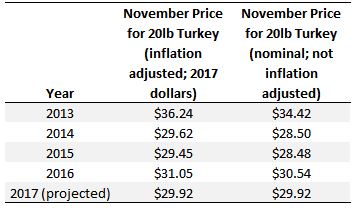Then answer, according to a paper just published in the journal Food Policy by Josh Maples, Derrell Peel, and me is "yes" - at least for most consumers.
The issue is that improved genetics and feeding technologies, along with various economic incentives, have led to much larger cattle. To provide some perspective, USDA data indicate that the average weights of commercially slaughtered cattle hovered around 1,000 lbs from the 1950s and the mid 1970s. Since that time, however, there has been a fairly steady increase in the size of cattle. Since 1975, finished cattle weights have increased about 9 lbs/year on average. In 2016, the average weight was 1,363 lbs. That's a whopping 366 lbs higher in 2016 than in 1975!
Larger cows mean larger steaks. On the surface, that seems like a good thing for consumers as it means we have more steaks. However, most people don't want to eat a 32oz steak. In fact, most restaurants and grocery stores offer relatively fixed serving sizes for steaks like 12oz or 16oz, for examples. So, what happens if cattle carcasses have gotten much bigger, and along with it, the muscles that are cut into steaks, but consumers still only want a 16oz steak? The consequence is that today, steaks are cut thinner. Thus, the core question is: for a fixed weight, do consumers prefer "traditional" thicker steaks that take up a smaller area or "newer" thinner steaks that take up a larger area?
To answer this question, we surveyed over 1,000 US consumers and presented them with a series of choices like the following that varied the type of steak, the thickness or the steak, the area of the steak, and price. Note that one you know the thickness and the area of a steak, the weight is pre-determined.
The findings?
“Our results imply that consumers are heterogeneous in preferences for steak size but are generally in unison in their dislike for the thinnest cuts of steaks”
About half the consumers preferred steaks with the largest area, but about half preferred steaks with a medium-sized area. Overall, the results suggest that the roughly 50% of consumers who prefer steaks with larger areas is way more than offset by the near universal dislike of steaks becoming much thinner.
Here's an excerpt from the conclusion:
“The decrease in consumer welfare by moving from a choice set containing small area and thick steaks to a choice set that includes large area and thin steaks implies that the changes in carcass size have led to a decrease in consumer utility from today’s steak choices relative to the steak choices of a few decades ago. The aggregate welfare loss from the increase in carcass weight with respect to ribeye and sirloin steaks is $8.6 billion for the two largest classes. Of course, steaks are only one piece of the carcass, and the increase in carcass size may have increased welfare with respect to other beef cuts. The decrease in welfare due to larger steaks can be offset by increased welfare resulting from the increases in quantity produced of other cuts. Ground beef is a prominent example. Because the form of this product remains generally unchanged as carcass size increases, the increased efficiency (i.e. more meat per animal) has likely led to increases in consumer welfare through lower prices (or smaller increases in prices resulting from the decrease in number of cattle slaughtered). However, steaks represent an important portion of the total carcass value and it is possible that the increasing size of other cuts have also created less desirable end products for consumers. Future research should focus on the impact of increased carcass weights on consumer welfare across multiple cuts. Such studies might find that while welfare losses exist for some cuts, the gains in welfare from other cuts lead to a net increase in consumer welfare due to larger cattle.”





